![]()
Streptomycin
and other drugs to treat Tuberculosis
![]()
Simon Cotton
University of Birmingham
![]()
Molecule of the Month April 2014
Also available: JSMol version.
![]()
|
Streptomycinand other drugs to treat Tuberculosis
Simon Cotton
Molecule of the Month April 2014
|
You're thinking of Fantine, the character played by Anne Hathaway in the latest version of Victor Hugh's Les Miserables. Sadly, TB is very much with us; around 1/3rd of the world's population is probably infected with it and it actually kills nearly 2 million people a year. Most of these victims are in the developing world, so you don’t hear much about them. There is a list as long as your arm of famous people killed by TB – several of the Bronte sisters as well as other writers including Elizabeth Barrett Browning, Anton Chekhov, Franz Kafka, John Keats and George Orwell; the composers Frédéric Chopin, Luigi Boccherini and Giovanni Battista Pergolesi; the actress Vivien Leigh (star of Gone With The Wind); Simon Bolivar (the liberator of Colombia, Venezuela, Ecuador, Peru and Bolivia); Saint Theresa of Lisieux; and King Edward VI of England.
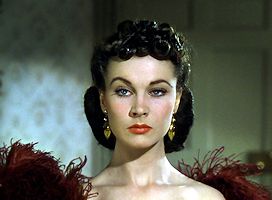 |
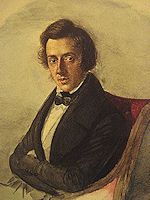 |
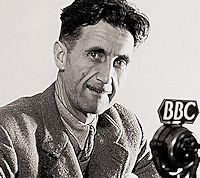 |
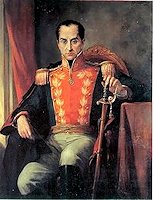 |
Vivien Leigh |
Chopin |
George Orwell |
Simon Bolivar |
Famous people who have died of TB. | |||
Following the Industrial Revolution, TB was a major cause of death in overcrowded and insanitary cities, and also a regular cause of death of (fictional) heroines in operas, just think of La Traviata, La Bohème, The Lady of the Camellias and The Tales of Hoffmann.
The scientist Robert Koch discovered the tubercule bacillus in 1882, winning the Nobel Prize in Physiology or Medicine for this in 1905. TB is caused by a bacterium, most usually Mycobacterium tuberculosis, a search for a cure went on for many years. In the early 20th century, sanatoria to treat tuberculosis were a great step forward, but the first drug effective against TB was not discovered until the 1940s.
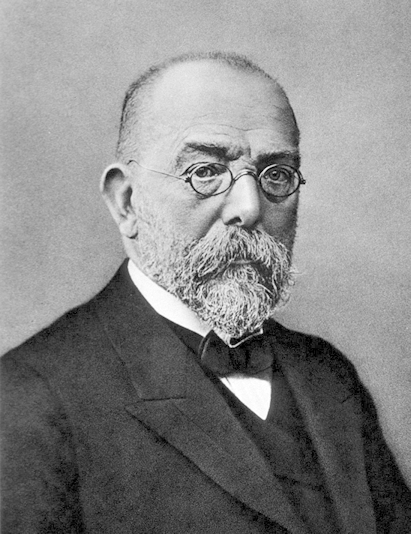 |
 |
Robert Koch |
Mycobacterium tuberculosis |
Streptomycin was the first molecule active against TB; it was isolated by Albert Schatz and Selman Waksman at Rutgers University in the United States.
Waksman’s family emigrated from the Ukraine to American when he was young. He had originally been a student at Rutgers, moved to California to carry out the research that led to his PhD, and later returned to Rutgers. He had a lifelong interest in micro-organisms in the soil, and the 1930s saw the discovery of the sulfa drugs, the first antibiotic (MOTM July 2011), followed by penicillin. In 1939 Waksman started a research programme studying soil micro-organisms that might have antibiotic properties against pathenogenic bacteria.
Albert Schatz began working in Waksman’s laboratories in 1942; after a brief spell in the US Army, where he began to look for antibiotics that could be active against penicillin-resistant bacteria, from which he was discharged on health grounds, he returned to Waksman, and worked in a basement lab that could easily be isolated from the rest of Waksman’s laboratories in the event of the bacterium escaping. Schatz chose to work with a very virulent form of Mycobacterium tuberculosis, supplied by William Feldman. Together with Corwin Hinshaw, Feldman worked at the Mayo Clinic in Rochester, Minnesota, looking for antibiotics active against TB.
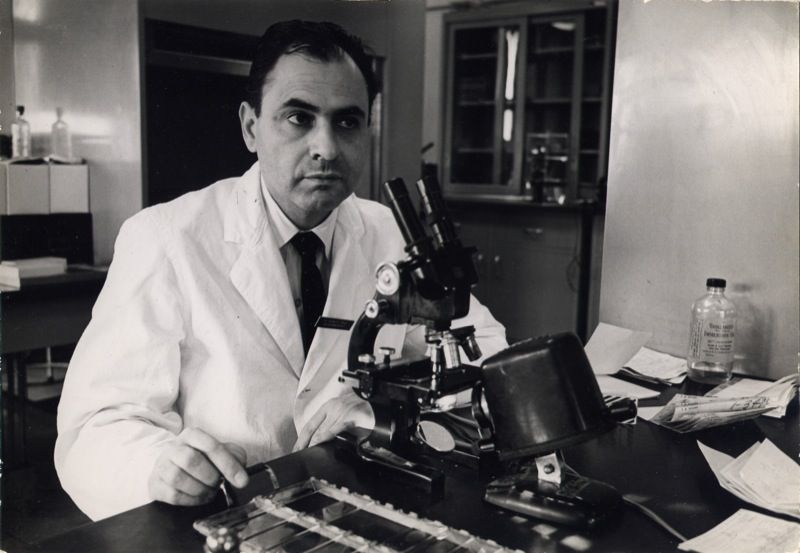 |
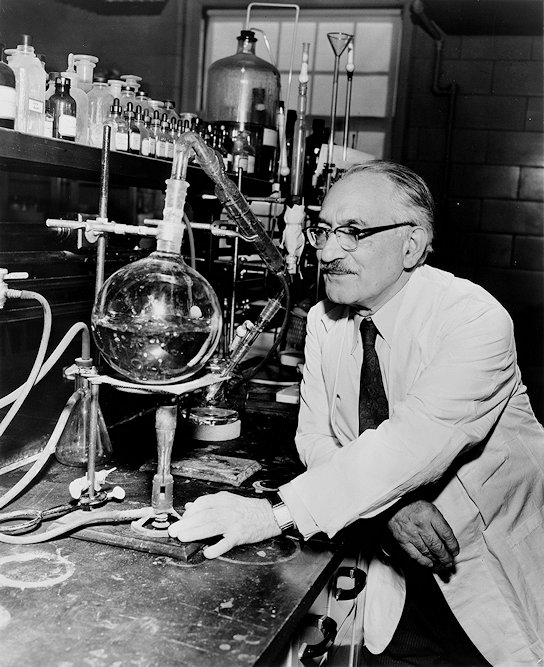 |
Albert Schatz | Selman Waksman |
Schatz discovered two strains of a bacterium that made an antibiotic he called streptomycin, which was active against Mycobacterium tuberculosis. Streptomycin is in fact active against many pathogens. After Schatz and Waksman reported the activity of streptomycin against tuberculosis in test organisms in 1944, Feldman and Hinshaw showed that streptomycin would successfully treat TB in humans. Schatz was to receive his PhD in 1945.
Both Schatz and Waksman were named on the application to patent streptomycin, awarded in 1948. Waksman persuaded Schatz to sign over his royalty-rights to Rutgers. Subsequently he found out that Waksman had an agreement with Rutgers to receive 20% of royalties, and also learned that Waksman was playing down Schatz’s role in the discovery. Schatz successfully sued the Rutgers Foundation, as well as Waksman, for a share of the royalties and recognition of his role in the discovery of streptomycin. An out-of-court settlement in 1950 awarded Schatz $120,000 for the foreign patent rights, and 3% of the royalties, representing about $15,000 per annum for several years. However, when the 1952 the Nobel Prize in Physiology or Medicine was awarded to Waksman "for his discovery of streptomycin, the first antibiotic effective against tuberculosis", there was no mention of Schatz, nor of Feldman and Hinshaw, who had shown that streptomycin was effective in human sufferers from tuberculosis.
It is an antibiotic which acts against a wide range of both Gram positive and Gram negative bacteria (in contrast to penicillin, which only acts against Gram-positive bacteria). It inhibits protein synthesis in the bacterium, binding to the rRNA in the ribosome, distorting the ribosomal decoding site and inhibiting binding of tRNA.
For one thing, bacteria become resistant to streptomycin. Fortunately, other molecules have been found to be active against TB. One of them is the simple molecule PAS, para-aminosalicylic acid. Because PAS has a similar structure to 4-aminobenzoic acid, which bacteria use to make folic acid, PAS was long believed to interfere with this process by a similar means of action to the sulfa drugs, but now it is thought that it acts on the folate pathway by generating molecules that are poisonous to the bacterium.
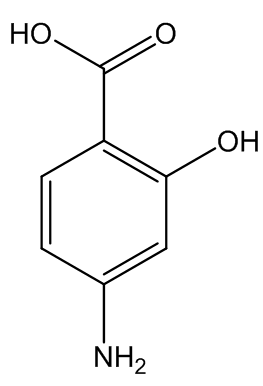
Para-aminosalicylic acid
Another of these is isonicotinic acid hydrazide (isoniazid). This inhibits cell wall synthesis. It is a prodrug, and one active molecule it produces is NO, as does the more recently discovered PA-824, which is still in the experimental stage.
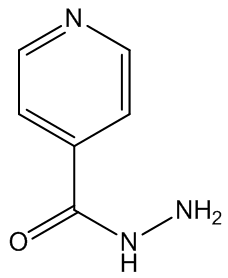 |
 |
Isoniazid |
PA824 |
There is also rifampicin, an antibiotic which blocks RNA synthesis.
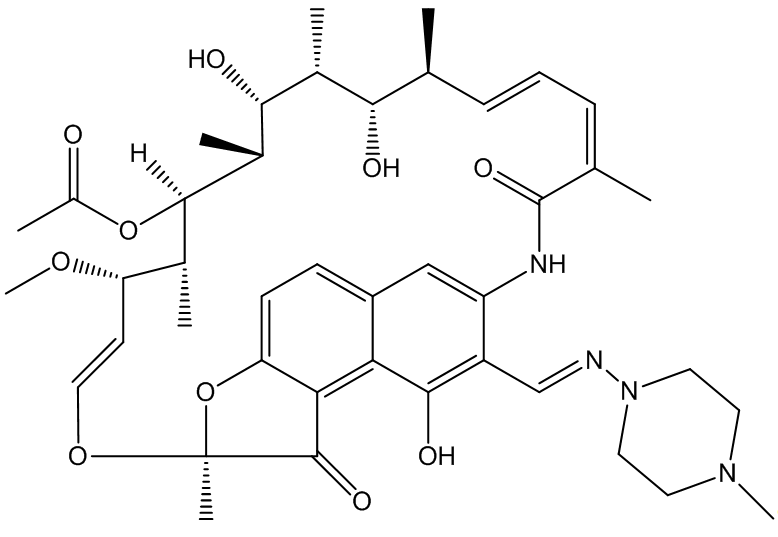
Rifampicin
Nevertheless, multi-drug-resistant TB is an increasing problem. The cause is partly due to patients not completing courses of antibiotics; even though they are partly cured, they still carry the bacterium. The bacterium is more easily spread due to greater population mobility, as well as air travel. Many AIDS sufferers have severely weakened immune systems and develop TB, which is responsible for 1/4 of HIV deaths. Multi-drug-resistant TB is a real problem.
A molecule called Bedaquiline has just been approved for cases of this, though it does have some possible side-effects in patients with cardiac arrythmias.
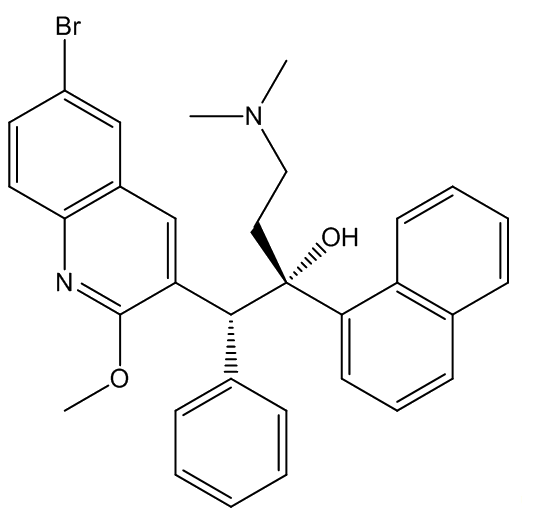
Bedaquiline
Bedaquiline works by targeting the proton pump for ATP synthase in the bacterium, a different target to other anti-TB drugs.

Delamanid
Another experimental drug called Delamanid acts by inhibiting mycolic acid synthesis, and trials indicate improved outcomes in patients with multidrug-resistant TB.
One source of encouragement is that many drugs are now known that target the bacterium in different ways, so that use of a cocktail of many of these offers real hope.
It can be, but many have recovered from it, and their stories are often inspiring. Take the Yorkshire cricketer Bob Appleyard. He took 200 first-class wickets in the 1951 season, whilst unknowingly suffering from TB. In 1952 he was successfully treated with streptomycin, then had surgery to remove the infected part of the lung, and convalesced in 1953, so he missed two whole seasons’ play. He recovered his health, and regained his form, despite reduced lung capacity, not just getting back into the Yorkshire XI but being selected for England, helping them retain the Ashes in their tour of Australia in 1954-5.
![]()
![]()
![]() Back to Molecule of the Month page. [DOI:10.6084/m9.figshare.5259118]
Back to Molecule of the Month page. [DOI:10.6084/m9.figshare.5259118]